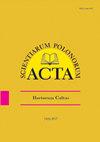濒危特有观赏植物——披毛Gypsophila piulifera的离体繁殖
IF 0.7
4区 农林科学
Q4 HORTICULTURE
引用次数: 2
摘要
毛果Gypsophila piulifera Boiss。&Heldr。,一种地方性和濒危物种是一种具有重要经济意义的植物,由于其含有皂苷,具有药用潜力。它也是一种观赏植物。在这项研究中,生产是在体外条件下进行的,目的是保护和经济评估该物种。由于该物种分布在一个非常狭窄的区域,容易受到人为影响,因此有灭绝的危险。为此,在含有不同浓度的6-苄基氨基嘌呤(BAP)、吲哚-3-乙酸(IAA)和萘乙酸(NAA)的Murashige和Skoog(MS)培养基中培养了毛滴虫的种子和茎尖外植体。从毛滴虫自然栖息地的两个不同位置获得外植体,在组织培养中从第一个位置获得的两种外植体类型获得了更多的植物。种子繁殖效果较好,在无激素MS培养基中,96.67%的种子发芽生根。茎尖在体外的再生率低于种子外植体。特别是在含有2mg/L BAP+2mg/L IAA的MS培养基中,生根率很低,生根和成苗率最高。在该培养基中,每株获得10.50±0.17个芽,并且仅在该培养液中也获得生根(每株1.67±0.09)。组织培养获得的幼苗在田间条件下继续成功发育,该方法已被确定为该物种的迁地保护和经济快速生产的合适方法。本文章由计算机程序翻译,如有差异,请以英文原文为准。
In vitro propagation of Gypsophila pilulifera, an endangered endemic ornamental plant species
Gypsophila pilulifera Boiss. & Heldr., an endemic and endangered species is an economically important plant that has a potential used in medicine thank to the saponins it contains. It is also an ornamental plant. In this study, the production was carried out under in vitro conditions in order to protect and economically evaluate the species, which is in danger of extinction due to its distribution in a very narrow area open to anthropogenic effects. For this purpose, seed and shoot tip explants of G. pilulifera were cultured in Murashige and Skoog (MS) medium containing different concentrations of 6-benzylaminopurine (BAP), indole-3-acetic acid (IAA) and naphthaleneacetic acid (NAA). Explants were obtained from two different locations of the natural habitats of G. pilulifera and more plants were obtained in the tissue culture from both explant types taken from the 1st location. Propagation from seed gave better results, and 96.67% of the seeds cultured in hormone-free MS medium were germinated and rooted. The shoot tip showed lower regeneration in vitro than the seed explant. Especially the rooting percentage is quite low and the highest rooting and shoot formation was obtained in MS medium containing 2 mg/L BAP + 2 mg/L IAA. In this medium, 10.50 ±0.17 shoots were obtained per plant, and rooting (1.67 ±0.09 per plant) was also achieved only in this medium. Seedlings obtained in tissue culture continue to develop successfully in field conditions, and this method has been determined as a suitable method for ex-situ conservation and economically rapid production of the species.
求助全文
通过发布文献求助,成功后即可免费获取论文全文。
去求助
来源期刊
CiteScore
1.30
自引率
14.30%
发文量
61
审稿时长
4-8 weeks
期刊介绍:
In Acta Scientiarum Polonorum Hortorum Cultus we publish original research papers and review articles containing new and significant information on broad aspects of horticulture and related disciplines. The papers are published in English only, in six issues yearly.

 求助内容:
求助内容: 应助结果提醒方式:
应助结果提醒方式:


